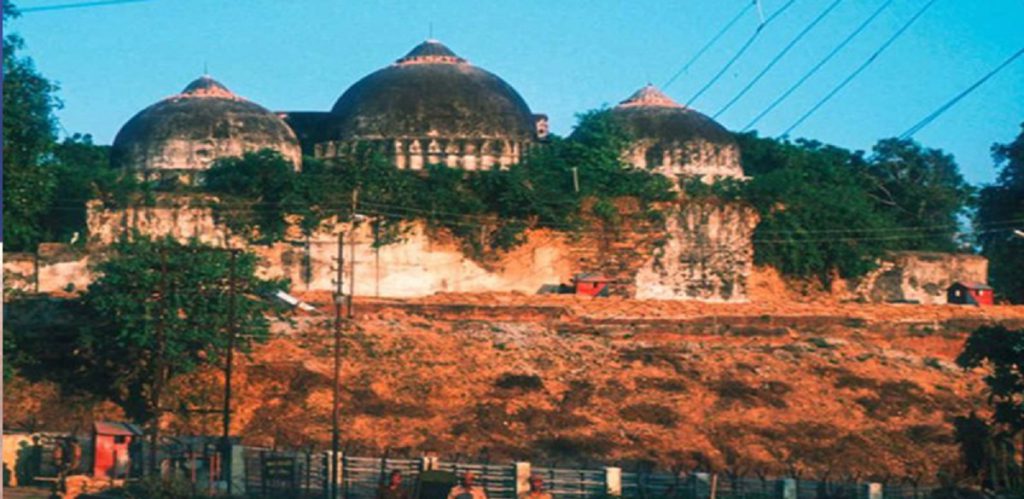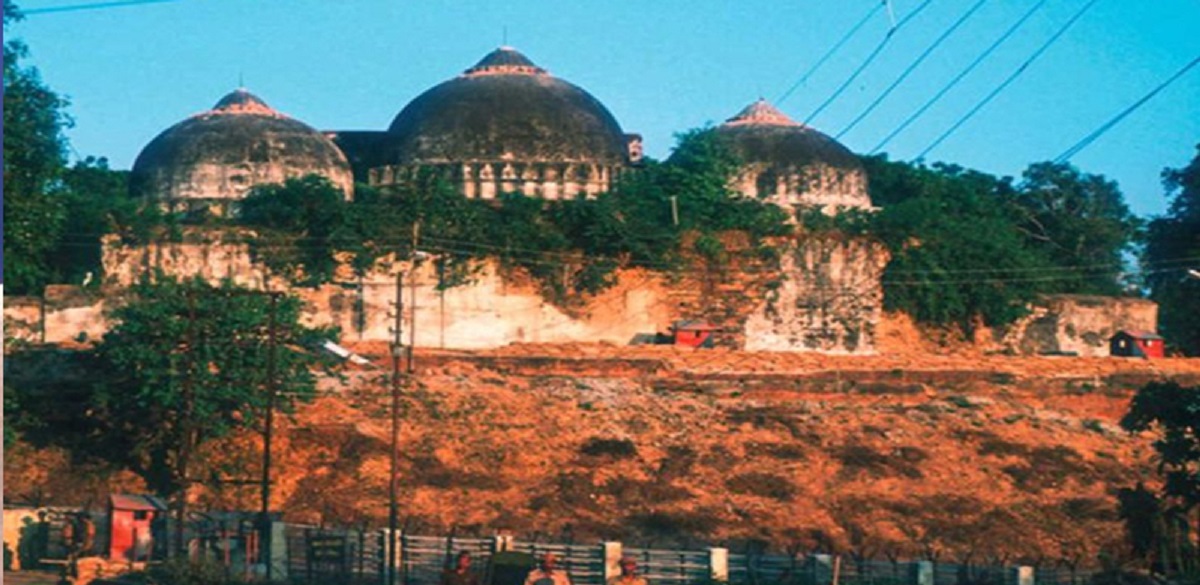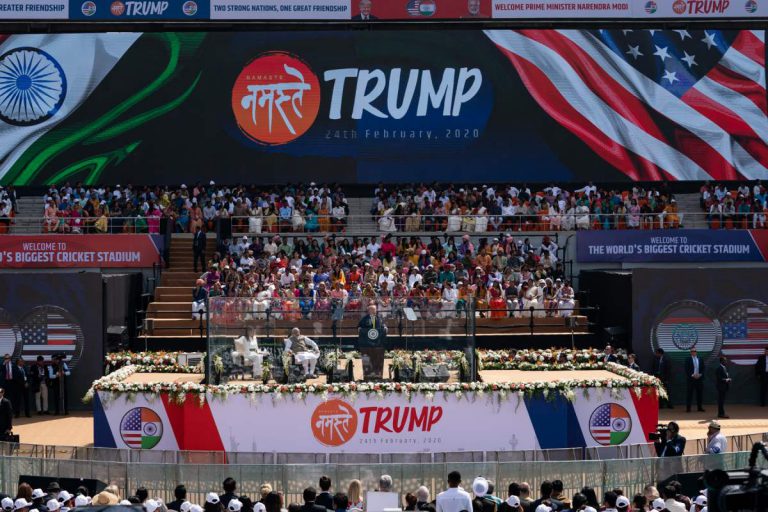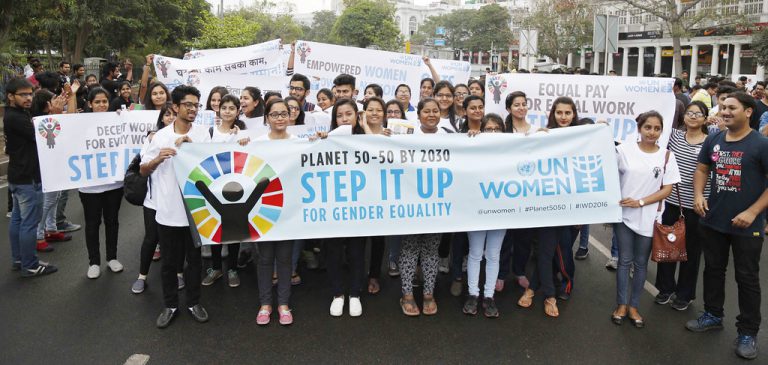Shri Ram Janmabhoomi site – A victory of India’s collective conscience?

[responsivevoice_button voice=”US English Male” buttontext=”Read out this Theel for me”]
In the wake of the opposition’s response and lies being peddled by a certain faction of the society over the Supreme Court judgement in the case of Shri Ram Janmabhoomi-Babri Masjid site pronounced in November 2019, it is more than an obligation for us to learn about the true facts of the case laid out in the said judgement before jumping to any conclusions by ourselves. It has become important to bring out the facts of the case because the same group has resorted to questioning the very judgement and calling it unjust. Therefore, let us have an objective look at the judgement in question from a purely factual standpoint.
The Apex Court of the Republic of India, which has dedicated itself to Secularism and the rule of law has concluded in its judgement dated November 9, 2019, that —
“On the balance of probabilities, there is clear evidence to indicate that the worship by the Hindus in the outer courtyard continued unimpeded in spite of the setting up of a grill-brick wall in 1857. Their possession of the outer courtyard stands established together with the incidents attaching to their control over it.
As regards the inner courtyard, there is evidence on a preponderance of probabilities to establish worship by the Hindus prior to the annexation of Oudh by the British in 1857. The Muslims have offered no evidence to indicate that they were in exclusive possession of the inner structure prior to 1857 since the date of the construction in the sixteenth century. After the setting up of the grill-brick wall, the structure of the mosque continued to exist and there is evidence to indicate that namaz was offered within its precincts. The report of the Waqf Inspector of December 1949 indicates that Muslims were being obstructed in free and unimpeded access to mosque for the purposes of offering namaz. However, there is evidence to show that namaz was offered in the structure of the mosque and the last Friday namaz was on 16 December 1949. The exclusion of the Muslims from worship and possession took place on the intervening night between 22/23 December 1949 when the mosque was desecrated by the installation of Hindu idols. The ouster of the Muslims on that occasion was not through any lawful authority but through an act which was calculated to deprive them of their place of worship. After the proceedings under Section 145 of CrPC 1898 were initiated and a receiver was appointed following the attachment of the inner courtyard, worship of the Hindu idols was permitted. During the pendency of the suits, the entire structure of the mosque was brought down in a calculated act of destroying a place of public worship. The Muslims have been wrongly deprived of a mosque which had been constructed well over 450 years ago.” (Para 797-798, Page 921-922)
Therefore, it is reasonably clear that the Hindus had an unimpeded possession of the site for over three centuries till the year 1857, and there’s no evidence on record to suggest that any Namaz was established at the site prior to 1856-57. Also, the Court has taken cognizance of the fact that Muslims were denied their right to worship at the site after the event of 1949 and 1992. In view of which the Apex Court has granted relief to the Muslim party using its power to decree under article 142 of the Constitution of India as under —
“The allotment of land to the Muslims is necessary because though on a balance of probabilities, the evidence in respect of the possessory claim of the Hindus to the composite whole of the disputed property stands on a better footing than the evidence adduced by the Muslims, the Muslims were dispossessed upon the desecration of the mosque on 22/23 December 1949 which was ultimately destroyed on 6 December 1992. There was no abandonment of the mosque by the Muslims. This Court in the exercise of its powers under Article 142 of the Constitution must ensure that a wrong committed must be remedied. Justice would not prevail if the Court were to overlook the entitlement of the Muslims who have been deprived of the structure of the mosque through means which should not have been employed in a secular nation committed to the rule of law. The Constitution postulates the equality of all faiths. Tolerance and mutual co-existence nourish the secular commitment of our nation and its people.
The area of the composite site admeasures about 1500 square yards. While determining the area of land to be allotted, it is necessary to provide restitution to the Muslim community for the unlawful destruction of their place of worship. Having weighed the nature of the relief which should be granted to the Muslims, we direct that land admeasuring 5 acres be allotted to the Sunni Central Waqf Board either by the Central Government out of the acquired land or by the Government of Uttar Pradesh within the city of Ayodhya. This exercise, and the consequent handing over of the land to the Sunni Central Waqf Board, shall be conducted simultaneously with the handing over of the disputed site comprising of the inner and outer courtyards as a consequence of the decree in Suit 5. Suit 4 shall stand decreed in the above terms.” (Para 800-801, Page 922-923)
Here it is pertinent to note that the Court has not just granted relief to the Muslim party but a very generous relief. Although the title was lost on the disputed site on a balance of probabilities, yet the Court decided to compensate the Muslim party for the denial of their right to worship at the site. There’s, however, nothing in the judgement to elaborate the way of measurement of the area to be granted as relief. Therefore, we cannot say how the Court has arrived at the figure of 5 acres as the relief to be granted against the title lost on an area of 1500 square yards (i.e., 0.30991 acres).
The present judgement is a very generous judgement in terms of the relief that has been granted and, at the same time, a non-compromising one on the principles of law. The Court, although, examined the evidence of all kinds put before it, but it did not transgress the ambit of law in arriving at its conclusions. It rightly noted that “A finding of title cannot be based in law on the archaeological findings which have been arrived at by ASI” (Page 907), and therefore, arrived at its conclusions stated right at the beginning of the article on grounds of justice and principles well settled in law. Hence, the issue of title was not decided on the archaeological findings of the ASI but the proof of unimpeded possession, oral and documentary, submitted before the Court.
As discussed above, it is true that the decision was not founded on the ASI report, but we, for the sake of better understanding of the matter and to have a fair view of the historical context, should still study the findings of the ASI in its excavation which was agreed to by all the parties. The Apex Court, in this regard, has noted that —
“(i) The foundation of the mosque is based on the walls of a large pre-existing structure;
(ii) The pre-existing structure dates back to the twelfth century; and
(iii) The underlying structure which provided the foundations of the mosque together with its architectural features and recoveries are suggestive of a Hindu religious origin comparable to temple excavations in the region and pertaining to the era.
II The conclusion in the ASI report about the remains of an underlying structure of a Hindu religious origin symbolic of temple architecture of the twelfth century A.D. must, however, be read contextually with the following caveats:
(i) While the ASI report has found the existence of ruins of a preexisting structure, the report does not provide:
(a) The reason for the destruction of the pre-existing structure; and
(b) Whether the earlier structure was demolished for the purpose of the construction of the mosque.
(ii) Since the ASI report dates the underlying structure to the twelfth century, there is a time gap of about four centuries between the date of the underlying structure and the construction of the mosque. No evidence is available to explain what transpired in the course of the intervening period of nearly four centuries;
(iii) The ASI report does not conclude that the remnants of the preexisting structure were used for the purpose of constructing the mosque (apart, that is, from the construction of the mosque on the foundation of the erstwhile structure); and
(iv) The pillars that were used in the construction of the mosque were black Kasauti stone pillars. ASI has found no evidence to show that these Kasauti pillars are relatable to the underlying pillar bases found during the course of excavation in the structure below the mosque.” (Page 906-907)
In this regard, we must note that the Court has accepted the findings of the ASI that the items found in the excavation are of “Hindu religious origins” and nothing to the contrary. However, at the same time, the Court is sceptical of the destruction of the underlying temple and construction of the mosque at the site in the absence of any comment by the ASI in its report. The Court has read these findings with a caveat that there is no certain record of the destruction of the temple and when it was destroyed, or it simply fell into ruins, and construction of the mosque, whether it was constructed after the destruction of the temple or temple falling into ruins by itself. It is understood that such caveats are necessary while deciding upon matters of high importance, which could have social ramifications.
However, in the course of research, I have come across a statement made by Prof. B.B. Lal, in charge of the first excavation at the site, explaining the findings of the first excavation and what they meant or pointed at. It is astonishing to know that Prof. Lal, although did not publicise the findings in relation to the excavation undertaken by him at the site, held that there was enough circumstantial evidence to conclude that the temple was destroyed for the construction of the mosque structure that stood at the site till December 6, 1992.
According to Prof. Lal, the pillar bases found in the course of excavation were oriented along cardinal directions and were similar to the Kasauti stone pillars on which the mosque dome stood. It is important to note that the trench dug up for the purpose of excavation was at a mere distance of 2 meters from the south (and west) wall of the structure. Also, the Kasauti stone pillars inside the mosque structure were covered with symbols of Hindu religious significance, including “Purna Kalash,” which is a symbol of prosperity in Hindu tradition. Prof. Lal, in his statement, has clarified that they did not just excavate on the Shri Ram Janmabhoomi site but a number of sites in Ayodhya itself and found similar evidence as found at the Janmabhoomi site. The confidence of Prof. Lal stems from the fact that such evidence was found in excavations undertaken at different sites connected with Ramayana, such as Shri Maharishi Bharadwaj Ashram at Prayagraj, Chitrakoot, etc.
Another important fact to be noted is that Prof. Lal had suggested that the destruction of the pillars could be dated back to 1500 CE on the basis of pottery found at the recent level, which was typical to the Muslim era in India. It is such an important point because such pottery was never found in India before the thirteenth century CE, which effectively is the period when the Islamic invasion of India reached its heights. The level at which this pottery was found is called the destruction level because, towards the wall of the mosque under the recent deposit, these destroyed pillar bases were found along with such pottery.
Therefore, we could not be sure why the scepticism of the Court still persisted if such statements were on record, but we could fairly hold that both the reservations of the Apex Court are unfounded as there is evidence on record to suggest that the site was destroyed, and the destruction could be dated. Also, the pillar bases found in excavation having such great amount of similarity to the Kasauti pillars inside the Mosque make it amply clear that these pillars are at least of the same origin if not of the same structure altogether. Henceforth, we should have no doubt whatsoever in regard to the destruction of the Temple for the construction of the Mosque.
Notwithstanding the caveats of the Court, from a legal standpoint, it has no importance with regards to the claim of the Deity over the particular site whether the temple was destroyed for the construction of the mosque or whether it simply fell into ruins by itself. Mosque standing over Kasauti pillars is enough evidence to suggest that the claim of the Deity was good and founded.
Further, the accounts of foreign travellers such as Tiefenthaler and Montgomery Martin, corroborating the claim of the Deity, indicate —
“(i) The existence of the faith and belief of the Hindus that the disputed site was the birth-place of Lord Ram;
(ii) Identifiable places of offering worship by the Hindus including Sita Rasoi, Swargdwar, and the Bedi (cradle) symbolising the birth of Lord Ram in and around the disputed site;
(iii) Prevalence of the practice of worship by pilgrims at the disputed site including by parikrama (circumambulation) and the presence of large congregations of devotees on the occasion of religious festivals; and
(iv) The historical presence of worshippers and the existence of worship at the disputed site even prior to the annexation of Oudh by the British and the construction of a brick-grill wall in 1857 (Page 907-908)
Apart from the above facts and findings, the Apex Court has noted on another occasion in the same judgement that —
“Hindu witnesses have indicated that Hindus used to offer prayer to the Kasauti stone pillars placed inside the mosque. Muslim witnesses have acknowledged the presence of symbols of Hindu religious significance both inside and outside the mosque. Among them, is the depiction of Varah, Jai-Vijay and Garud outside the three domed structure. They are suggestive not merely of the existence of the faith and belief but of actual worship down the centuries;” (Page 911)
In this regard, no matter how hard we try to explain the construction of the mosque, ignoring all the circumstantial evidence that points at the destruction of the temple, over the Kasauti stone pillars, there is no sound reason to be assigned to the presence of symbols of Hindu religious significance both inside and outside the Mosque. Even if we try to explain these symbols somehow, the presence of the depiction of Varaha outside the Mosque could still not be explained in a reasonable fashion.
After having looked at all the facts stated above, we could reasonably conclude that:
- there stood a temple at the site where the mosque was brought up in the year 1528 CE, and the said Mosque stood on the Kasauti stone pillars of Hindu religious origin till December 6, 1992
- there is enough circumstantial evidence on record to suggest that the temple was destroyed for the construction of the mosque
- the destruction of the Temple could be dated back to 1500 CE based on the pottery found at the recent level in the course of (first) excavation
- the Temple was a grand Temple standing on some 85 pillar bases discovered in the course of excavations
Therefore, we could say it is a plausible judgement by the Apex Court that ensured no injustice was meted out to any of the parties involved. We may have agreements or disagreements with regard to the measure and extent of relief granted, but the fact remains that justice was served. The Court stuck to the book and ruled in the most mature fashion that it could afford. It is not a matter of the judiciary to abstain from the use of powers conferred upon it by the Constitution but the Legislature to see what powers should really be conferred.
It is a victory of our collective conscience that has suffered innumerable blows and still showed up with the desired resistance every single time.
Featured Image Credits: Wikimedia








